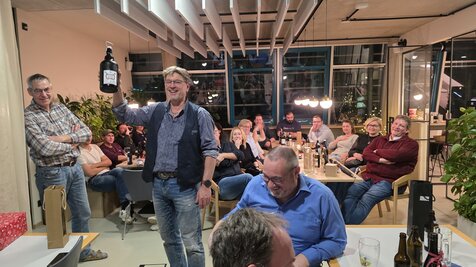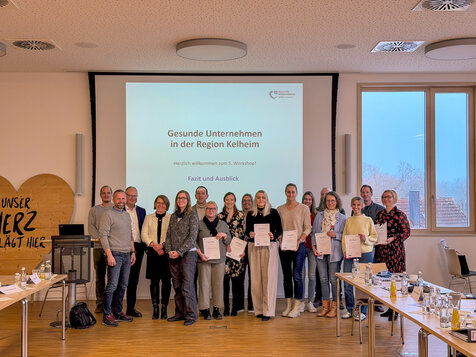
Every year again - our internal Christmas party
Once again this year, we had a wonderful internal Christmas party together. A big thank you goes to our entertainment manager Sonja Eichstätter for organizing the evening.
Scientists from the Fraunhofer Institute IFAM and the German Aerospace Center say: No, green electricity alone will not be enough for so many heat pumps in the foreseeable future. But instead of continuing to blow exhaust fumes from "conventional" coal-fired power plants into the air or importing electricity from abroad, they recommend an "intensified CHP strategy": using power-to-gas plants to convert surplus wind power into bio natural gas and then using this in combined heat and power plants as electricity (also for heat pumps) and local heating.
At least that's what the latest "Brief study on the role of CHP in the energy transition" from March 2018 says.http://www.bkwk.de/fileadmin/users/bkwk/download/studien/B.KWK_Studie_Perspektiven_der_KWK_in_der_Energiewende_final.pdfIn contrast to today's standard approach of bringing combined heat and power (CHP) plants as close as possible to the maximum annual number of 8760 hours, "the operating times of CHP would gradually decrease further in the course of the expansion of fluctuating electricity generation. However, the CHP plants would generate electricity at times when higher prices are to be expected due to the lack of electricity generation from fluctuating renewable energies," wrote study directors Max Fette (IFAM) and Hans Christian Gils (DLR) in the summary.
The aim of their work was to compare the advantages and disadvantages of a heat pump supply based purely on grid power operation with a strategy in which the heat pump electricity is generated using CHP. This was done "in the interest of a complete decarbonization of the heat transition, which is vehemently demanded", according to the study authors. They did not achieve a complete and quantified, "but a qualitative assessment of the key strategy elements, which can form the basis for the necessary energy policy choice between the strategies".
What FHG-IFAM and DLR have put together on 82 pages should not only please the clients from the German Cogeneration Association BKWK: the study also shows CHP companies such as Gammel Engineering a good outlook for the future. "An intensified CHP strategy shows that the residual load (electricity surplus and shortfall; editor's note) can be balanced out significantly throughout the year. This applies to the case presented here, where the CHP systems include flexibly deployed heat pumps and electric heaters. Both the large heat pumps and the electric heaters modeled here would only run when there is a negative residual load (surplus electricity) and the CHP module would only run when there is a positive residual load (shortage of electricity)."
It should be noted here: For forward-thinkers, only heat pumps should be considered in this case, whereas heating rods are an absolute no-go! This is where the Gammel Energy team disagrees with the study authors. But otherwise very much so.
Without CHP, supplied heat pumps (HPs) would have another serious disadvantage in addition to the electricity demand that can hardly be covered by renewable sources, the authors have listed: "HPs cause a load of over 18 gigawatts (GW) in almost 1,000 hours with a maximum value of 53 GW. As maximum values are expected to be synchronized regionally and nationally, this also places high demands on grid expansion." In other words: even more new, unpopular high-voltage lines would be necessary, regardless of whether Lusatian coal or French nuclear fuel rods would supply the HP electricity.
At this point, we would also like to point out a tried-and-tested, functioning long-term storage system in the country: our natural gas grid and cavern storage facilities. We just need to use them! And instead of temporarily storing electricity, it is better to store heat cost-effectively.
In any case, the study has a very interesting message for CHP experts and fans: "The role of CHP in the energy transition would change significantly in the course of a development that leads to the energy demand being largely covered by renewable sources." Towards more CHP, but shorter CHP running times.(Author: Zukunftsenergie-Team Gammel)

Once again this year, we had a wonderful internal Christmas party together. A big thank you goes to our entertainment manager Sonja Eichstätter for organizing the evening.

Healthy and motivated employees are the foundation of a successful company - especially in economically challenging times. The "Healthy companies in the district of Kelheim" network, in which nine regional companies have joined forces to establish occupational health management (OHM) not as a short-term measure, but as a sustainable and systematic process, follows precisely this claim.

What great news! We are incredibly proud and delighted that, together with our partner IWR GmbH, we have been awarded the planning contract for a 12 MW seawater heat pump including seawater extraction and a biomass heating plant as part of the cross-border UNITED HEAT project.